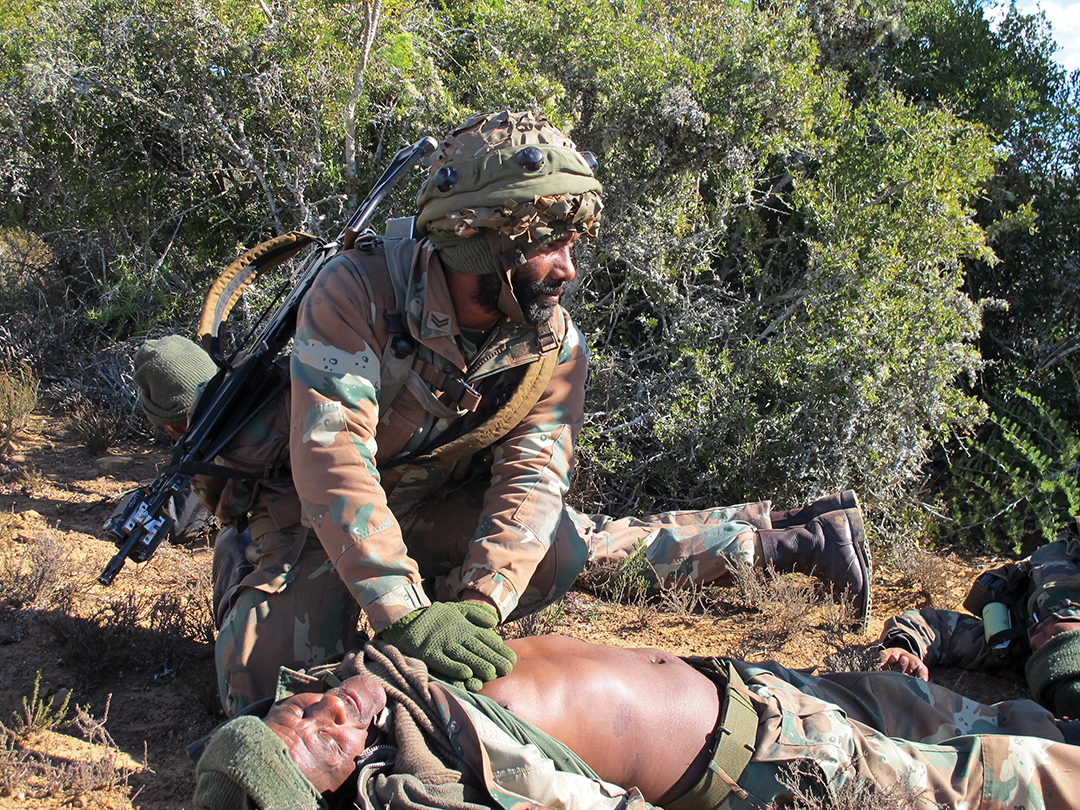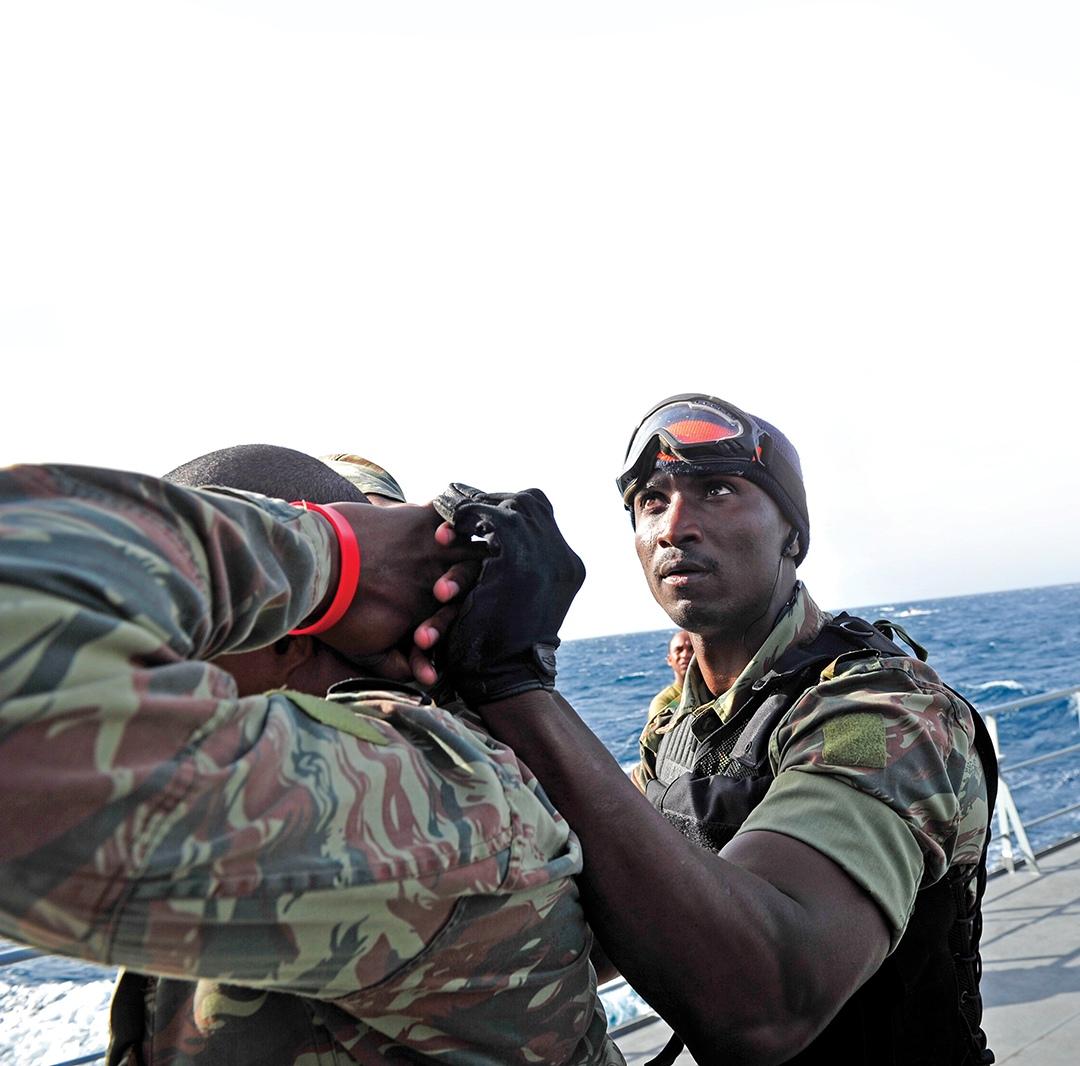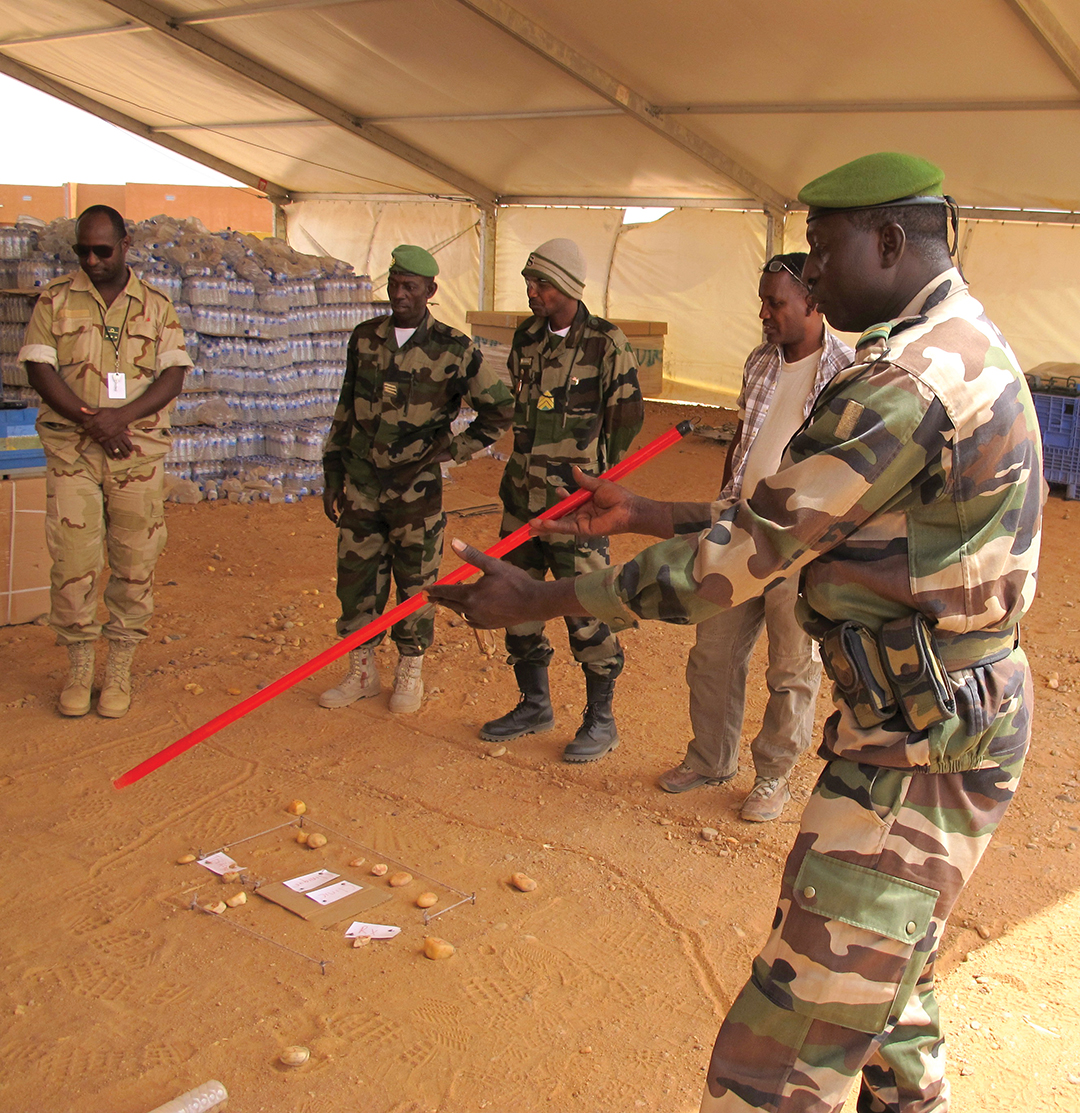Technology Saves Money and Protects Soldiers and Equipment
Consider the typical tank used in combat. Tanks are a key component of modern ground warfare, but their use comes at a price. They are expensive to buy and expensive to operate. They guzzle fuel. Their tracks wear out. Tanks can be unreliable and difficult to repair. And tank training is destructive.
“If you use a tank for a week in the field, I think you know what the result is,” said a military training specialist from Saab, the Swedish aerospace and defense company. “A tank levels everything in its path.”
That’s where simulated training comes in. Simulated training, also known as modeling or M&S, allows militaries to train their personnel without mechanical and human wear and tear. It also keeps training costs down.
When people think of simulated training, they generally think of flight simulators, computer war games and sophisticated shooting galleries. But simulated training dates to 5,000 years ago, when military leaders used colored stones and grid systems on a board to map out strategies.

Military leaders now regard simulation as a necessity, although it does not replace hands-on training. One South African official estimated that 30 simulated military exercises can be funded for the same price as one traditional brigade exercise.
The South African Centre for Conflict Simulation conducts 25 to 35 simulations each year, with about half involving warfare and one-third for peacekeeping operations. About 10 percent are for disaster management, and the rest are for general training.
African countries are still relatively new to modern simulations, including up-to-date flight simulators. A 2015 simulator census published by Military Simulation & Training magazine showed that only two African countries had a significant number of fully equipped flight simulators: South Africa had 11, and Algeria had 10.
Modern flight simulators should not be mistaken for a computer running the latest version of Microsoft Flight. “Environment” flight simulators are huge devices, capable of training entire flight crews simultaneously. The defenceWeb news portal describes one such trainer at the Air Force base in Ysterplaat, South Africa, which replicates the fuselage of an aircraft for training systems operators, navigators and other crew members. It can accommodate eight students at a time.
“The simulator provides full training from briefing to post-mission debriefing,” defenceWeb reported. “By using the simulator instead of actually flying, it has saved 60 percent of actual flying hours, resulting in huge cost savings.”
Full environment simulators also are used for training crews for submarines, helicopters, strike craft, tanks and armored vehicles.
THREE KINDS OF SIMULATIONS
Live simulations consist of real people, real or dummy weapons and blank ammunition. A typical scenario will have Soldiers in the field wearing sensors on their shoulders or helmets so their exact locations can be monitored. This type of simulation provides a learning environment as close to reality as possible.
Live simulations have obvious advantages, including getting Soldiers in the field accustomed to wearing and traveling with their gear. It is an excellent way for Soldiers to provide feedback to their trainers. Soldiers trained with live simulations tend to retain their training longer than with other types of simulations.

Virtual simulation is accepted, and even welcomed, by young Soldiers who grew up playing video games. It is highly adaptable. Armies use virtual simulation for training individuals and teams. An entire crew can be trained at the same time, in one facility. As one trainer described it, “Some types of virtual simulation are basically people sitting around playing video games.” Virtual simulation provides the best possible scenario for instructors to give students instant feedback on their performances.
Constructive simulations, also known as tabletop simulations, are purely hypothetical, allowing countless “what if” scenarios. The aforementioned military leaders of 5,000 years ago were engaged in constructive simulation with their rocks and maps.
In constructive simulations, everything is simulated — people, equipment and terrain. Constructive simulations are used for pure war-gaming — using computer modeling to move imaginary Soldiers through various field scenarios, including combat.
Modern constructive simulations have become incredibly sophisticated, with computers fed such data as troop types and numbers, weather, locations of enemy troops, strength and types of armaments, and field conditions. Invasions, rescue operations and other field maneuvers are then “played” repeatedly to see which approaches give the best results.
Regardless of the type of simulation, designers divide such military training into three levels.
The tactical level is used to develop, improve and evaluate basic military plans and maneuvers.
The higher tactical level is used to test the effectiveness of plans that already have been developed. Participants can develop an intelligence picture and evaluate contingency plans.
The operational level aligns strategic objectives according to realistic timelines. At this level, operators can allocate correct numbers and types of forces for specific tasks, in real time and on carefully mapped playing fields.

Lt. Col. Hugh Evans of the British Armed Forces told ADF that modern simulations are so detailed that they can include such components as staged press conferences with some participants playing the roles of reporters.
Evans has worked with Botswana, South Africa and Zambia to stage tabletop simulations. The simulations involve a fictional African country that has just signed a cease-fire with troops being sent in to maintain the peace. The variables include weather, malnutrition, disease, terrorist factions who have not signed the peace agreement, internally displaced people, and refugees.
“The students get a book which tells them all about the country itself, where the ports are, the forces at work, ethnic backgrounds, religious distribution,” Evans said.
Although the exercise is computerized, a large part of it involves discussions and negotiations.
“The exercise is broken down into a civilian planning cell in the various strands, a military planning cell, which is deliberately quite small, and a mission support cell, which is police and [nongovernmental organizations],” Evans said. “The Soldiers playing the roles of civilians are actually dressed in civvies. One year, they all turned up in uniform, which didn’t work. If they are playing the role of civilians, you have to get them to dress like civilians, so that they will think like civilians.”
The exercise takes a week. By the end of the week, the participants have produced a full detailed plan to maintain the peace.
“You’re trying to get people to look at a problem from a different point of view,” Evans said.
GAMES FOR TRAINING
Some countries have established “games for training” programs. One popular platform is Virtual Battlespace, which provides a large simulated area for warfare. Battles can be viewed from any perspective, and recorded movements can be reviewed later. Users of such games can create custom models and objects. The programs can be networked, allowing multiple players. Virtual Battlespace, for instance, can network up to 256 players at the same time. It is particularly useful in training forward observers and forward air controllers.
Customizable programs such as Virtual Battlespace have the added advantage of being affordable to just about any organization. “The increasing use of commercial off-the-shelf equipment is making simulation much cheaper,” a Saab official told defenceWeb. “The cost of simulation is coming down dramatically.”
Simulated training has some downsides. Sometimes the technology is beyond the capabilities of its users. And virtual players forget what they have learned faster than Soldiers who have participated in field training.

“Instead of just having their imagination to visualize what may be occurring there, they can now use simulation and actually see events and effects occurring on top of the real environment,” Peter Squire of the U.S. Office of Naval Research told the magazine. The technology is so new, researchers are monitoring participants for such things as motion sickness and whether the simulations are realistically bright.
One test of the new technology involved virtual tanks on a field being attacked by virtual fighter planes with simulated weapons. A virtual environment can be created almost anywhere — including a parking lot.
Another relatively new development is autonomous robots used for weapons training. Military Simulation & Training magazine reported in 2015 that the target robots, mounted on wheels, “look, move and behave like real people,” significantly improving marksmanship training. The “smart targets” are much less expensive than building a moving-targets rifle range. Any firing range can be converted to a state-of-the-art moving firing facility in a single day. One operator can handle 20 or more of the robots at the same time.
The robotic ranges include “civilian” robots to teach Soldiers to be discriminating in their shooting. Officials said use of the “civilians” has become a key component of the training, as a means of reducing civilian casualties in the field.
The robots can be programmed to carry out specific tasks. One scenario has the robots “attacking” a firing position, with little operator participation. The aggression of the attack can be adjusted and can change automatically as targets are hit. As one operator noted, the robots can even “conduct an orderly withdrawal — or a panicked retreat.”

